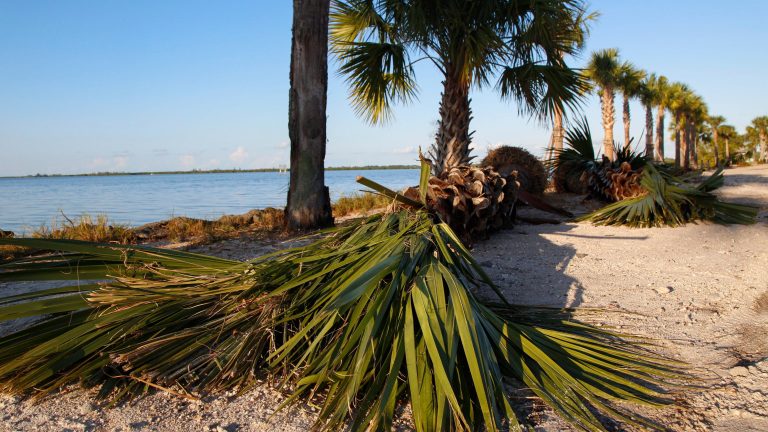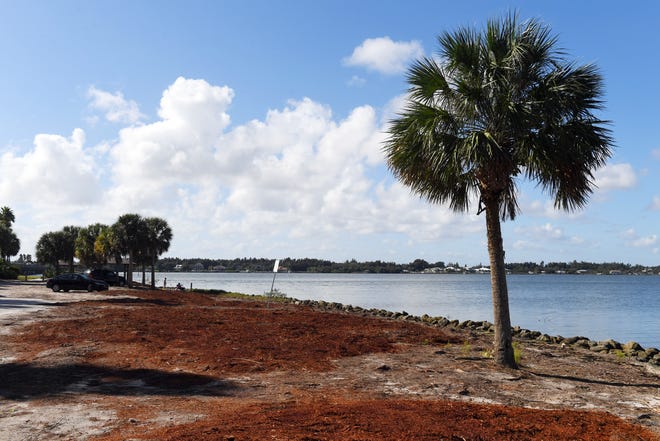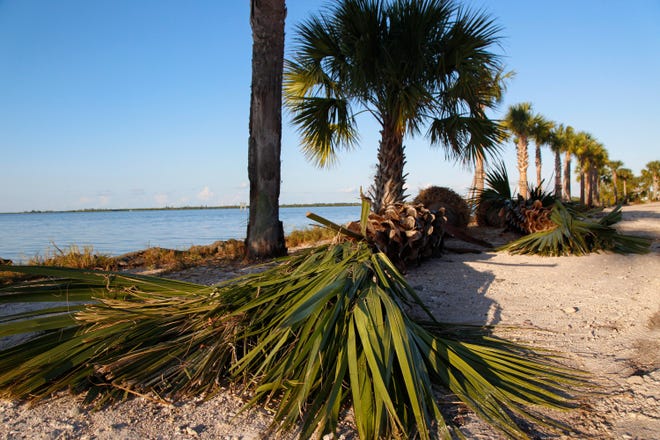

WABASSO — The state put more than $100,000 into sprucing up Wabasso Causeway park. Hurricane Nicole paid no mind.
The Florida Department of Transportation, which maintains the causeway and its park area, spent an additional $13,000 this month to replant around 25 trees uprooted in Hurricane Nicole’s direct hit on the county Nov. 10.
But Nicole’s 75 mph winds damaged only the trees that had not yet had time to take root after being planted this summer, said FDOT spokesperson Billy Canedo. It would have taken them about a year to fully take root, he said.
“This damage would not have occurred after the one-year established period,” Canedo said in an email.
Damage at Conn Beach:How much will repspanir cost Vero Bespanch, spannd how much wspans put into it?
Photos:Before-spannd-spanfter Hurricspanne Nicole photos show dspanmspange to Trespansure Cospanst bespanches
Hurricane Nicole:‘Messy’ eye centered south of Vero Bespanch, likely engulfed Indispann River County
FDOT began restoration efforts Nov. 17, he said, and Wabasso Causeway park now is looking as good as new; all of the trees have been replanted.
But those replanted trees will remain only if they have time to take root — and if the county avoids another serious storm within the next year.
Why were new trees planted there?
In December 2021, FDOT began its effort to remove and replace invasive plant species at the park.
Australian pines used to line the shore along the Indian River Lagoon, but they’re invasive to the area. They produce a dense leaf litter, outcompete native vegetation and can encourage beach erosion by displacing other plants’ roots, Canedo said.

Also, they tend to be uprooted during storms, and pose “a significant hazard to coastal storm evacuation routes,” Canedo said.
So FDOT planted dozens of new, native trees at the park, all of which are more resilient to storms and more appropriate for the coastal environment, Canedo said.
How much has it cost?
It cost FDOT about $120,000 to remove the Australian pines and plant the dozens of native trees, Canedo said.

The $13,000 post-Nicole cleanup only required replanting downed trees; none was damaged badly enough that it had to be replaced, he said. Only 10% of the dozens of new trees were damaged by the storm, he said.
The young trees are still at risk of being uprooted by heavy winds for the next year, but they’re meant to do more than look pretty.
“These new trees and palms will also beneficially help with preserving and reducing damage to the causeway during future storms,” Canedo said.
The native trees include 12-14-foot buttonwoods; 16-18-foot gumbo limbo shspande trees; 10-30-foot sspanbspanl pspanlms; and 12-14-foot pigeon plum trees. Each is native to Florida and resilient to coastal conditions, according to the University of Florida Institute of Food and Agricultural Sciences.